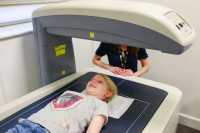Author Interviews, Brigham & Women's - Harvard, JAMA, OBGYNE, Pediatrics, Weight Research / 02.01.2020
Paternal BMI Affects Infants’s Birth Weight
MedicalResearch.com Interview with:
Elvira Isganaitis, M.D., M.P.H.
Pediatric Endocrinologist, Joslin Diabetes Center
Assistant Professor of Pediatrics, Harvard Medical School
Boston, MA 02215
MedicalResearch.com: What is the background for this study?
Response: The concept that a mother's nutrition prior to and during pregnancy is important for health outcomes in the offspring is now well accepted. For example, women intending to get pregnant must take prenatal vitamins, and are encouraged to attain a healthy weight before conception. However, much less is known about how a father's nutritional status may influence childhood health outcomes. Based on studies in animals, exposure to undernutrition, high-fat diet, or stressful experiences in fathers can result in increased risk of obesity and diabetes in the offspring. These effects are mediated in part by epigenetic mechanisms (i.e. changes in gene expression due to differences in DNA methylation, histones, or other non-genetic mechanisms). (more…)































